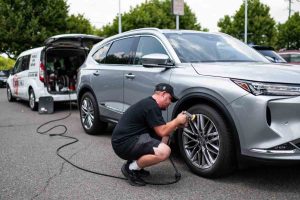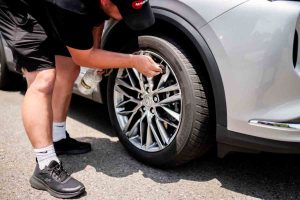
Your car. It’s more than just a mode of transportation; it’s an extension of you, a reliable companion on countless journeys. So, it’s only natural to feel a pang of disappointment when you notice those unsightly scratches, scuffs, or the dreaded curb rash marring its once pristine finish. Whether it’s a minor scrape from a rogue shopping cart or a more serious encounter with a curb, these blemishes can detract from your car’s appearance and even affect its resale value. But don’t despair! From DIY touch-ups to professional-grade restorations, there are solutions for every type of scratch, scuff, and paint issue. This guide will navigate you through the world of car paint repair, helping you understand the causes, explore your options, and get your car looking its best again.
Understanding the Culprits: What Causes Scratches and Scuffs?
Before we dive into the solutions, it’s helpful to understand the common causes of these paint imperfections. Knowing where they come from can help you take preventative measures in the future.
- Road Debris: Rocks, gravel, and other debris kicked up by tires can cause chips and scratches, especially on the front of your car.
- Shopping Carts and Doors: Parking lots are a minefield! Stray shopping carts and careless door openings are frequent culprits.
- Curb Rash: This occurs when your wheels rub against a curb, often damaging both the wheel and the surrounding paint.
- Weather and Environmental Factors: Sun exposure, acid rain, and bird droppings can all damage your car’s paint over time.
- Accidental Scrapes: Tight parking spaces, low-hanging branches, and even your own keys can lead to scratches and scuffs.
Assessing the Damage: What Type of Scratch Do You Have?
The type of scratch or scuff will determine the best course of action. Here’s a breakdown:
- Clear Coat Scratches: These are superficial scratches that only affect the clear coat, the top layer of your car’s paint. They often appear as light scratches or swirl marks.
- Base Coat Scratches: These scratches penetrate the clear coat and reach the base coat, the actual color of your car. They are usually more visible than clear coat scratches.
- Primer Scratches: These are deeper scratches that go through the clear coat, base coat, and reach the primer layer. They require more extensive repair.
- Deep Scratches/Dents: These are the most severe type of damage and may require professional bodywork.
DIY vs. Professional Repair: Which is Right for You?
For minor scratches and scuffs, DIY repair kits can be a cost-effective option. These kits typically include touch-up paint, rubbing compound, and polishing cloths. However, it’s important to choose the right color match for your car and follow the instructions carefully.
For deeper scratches, larger areas of damage, or if you’re not comfortable with DIY repair, it’s best to consult a professional auto body shop. They have the expertise, tools, and equipment to restore your car’s paint to its original condition.
DIY Fixes: A Step-by-Step Guide (for minor scratches)
- Clean the area: Wash the affected area thoroughly with soap and water, and dry it completely.
- Apply touch-up paint: Carefully apply a small amount of touch-up paint to the scratch using a fine-tipped brush or applicator. Try to apply the paint in thin layers to avoid drips.
- Let it dry: Allow the touch-up paint to dry completely according to the manufacturer’s instructions.
- Apply rubbing compound: Use a small amount of rubbing compound on a clean cloth and gently rub the area in a circular motion. This will help to smooth out the touch-up paint and blend it with the surrounding paint.
- Polish the area: Use a clean polishing cloth to polish the area and remove any remaining rubbing compound.
- Wax the area: Apply a coat of wax to protect the repaired area and restore its shine.
Professional Repair: What to Expect
Professional auto body shops use specialized techniques and equipment to repair car scratches and scuffs. They may use paint matching systems to ensure a perfect color match, and they can also perform more complex repairs, such as dent removal and bodywork. While professional repair is more expensive than DIY, it’s often the best option for larger or more severe damage.
Preventing Future Scratches and Scuffs
Prevention is always better than cure. Here are some tips to help protect your car’s paint:
- Park carefully: Avoid parking too close to other cars or curbs.
- Use a car cover: A car cover can protect your car from the elements and prevent minor scratches.
- Wash and wax regularly: Regular washing and waxing will help to protect your car’s paint and keep it looking its best.
- Be mindful of your surroundings: Pay attention to your surroundings when driving and parking to avoid accidental scrapes and scratches.
Conclusion
Scratches and scuffs are an unavoidable part of car ownership, but they don’t have to be a permanent problem. By understanding the causes, assessing the damage, and choosing the right repair method, you can keep your car looking its best for years to come. Whether you opt for a DIY fix or seek professional help, addressing those blemishes will not only improve your car’s appearance but also restore your peace of mind. So, don’t let those scratches and scuffs get you down. Take action and get your car back to its showroom shine!




